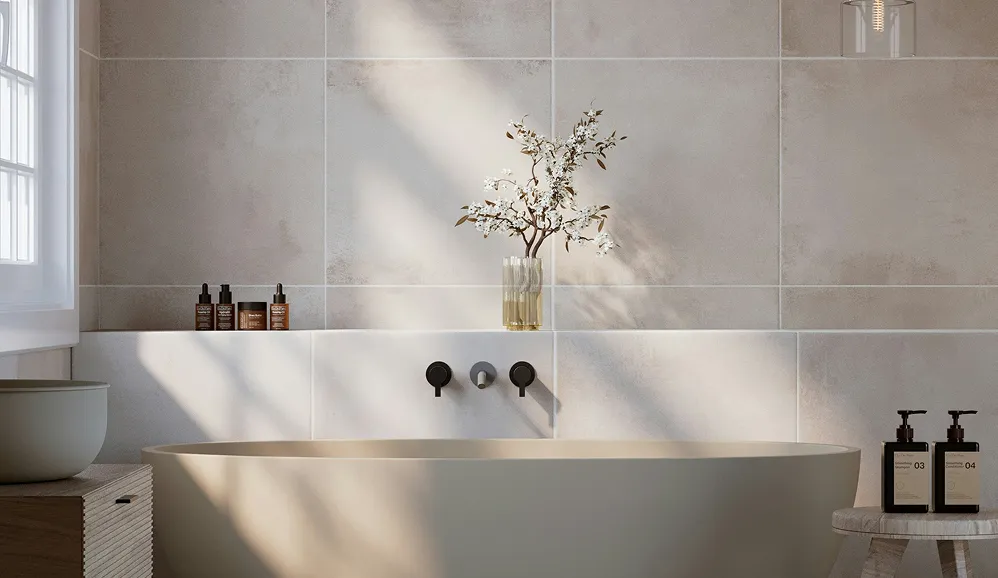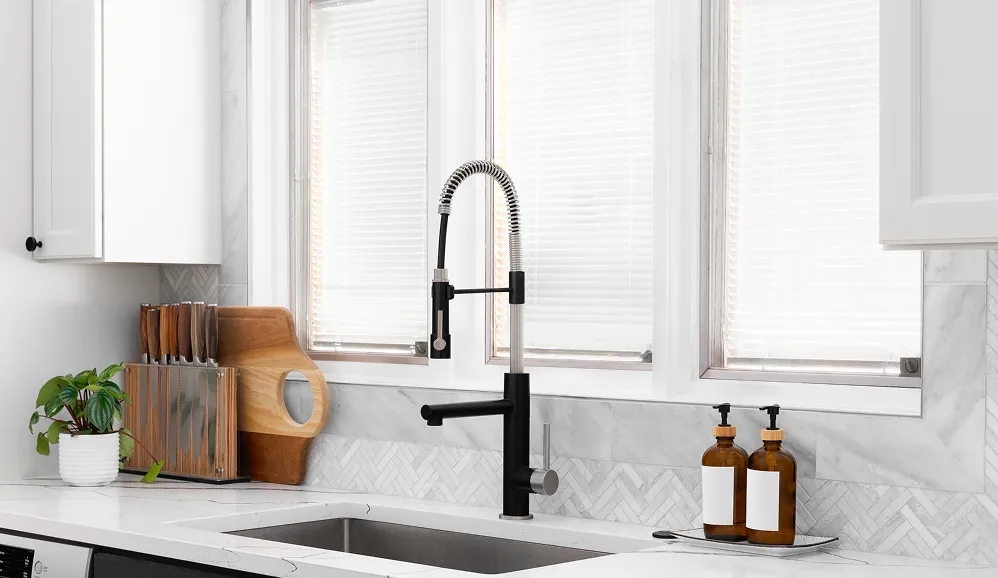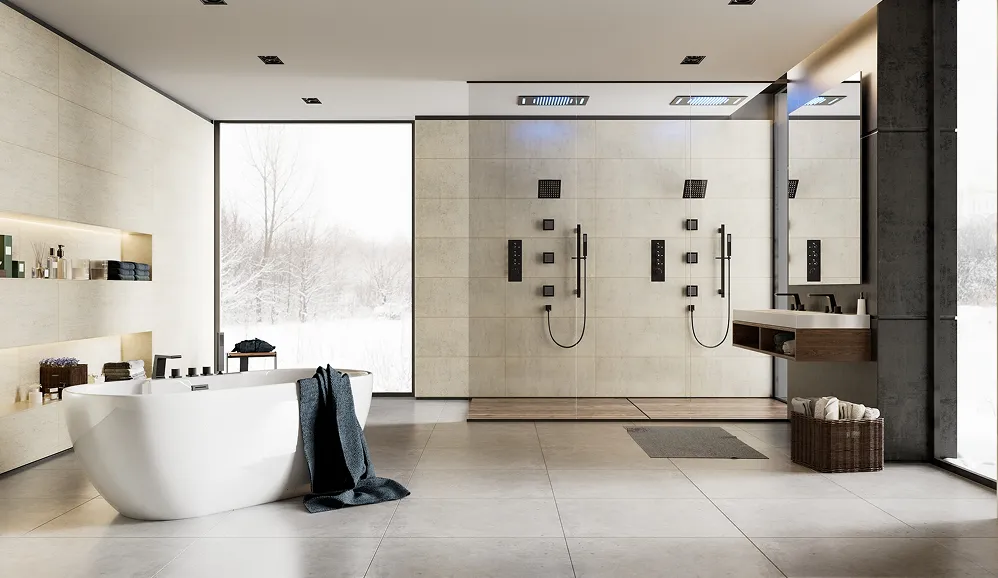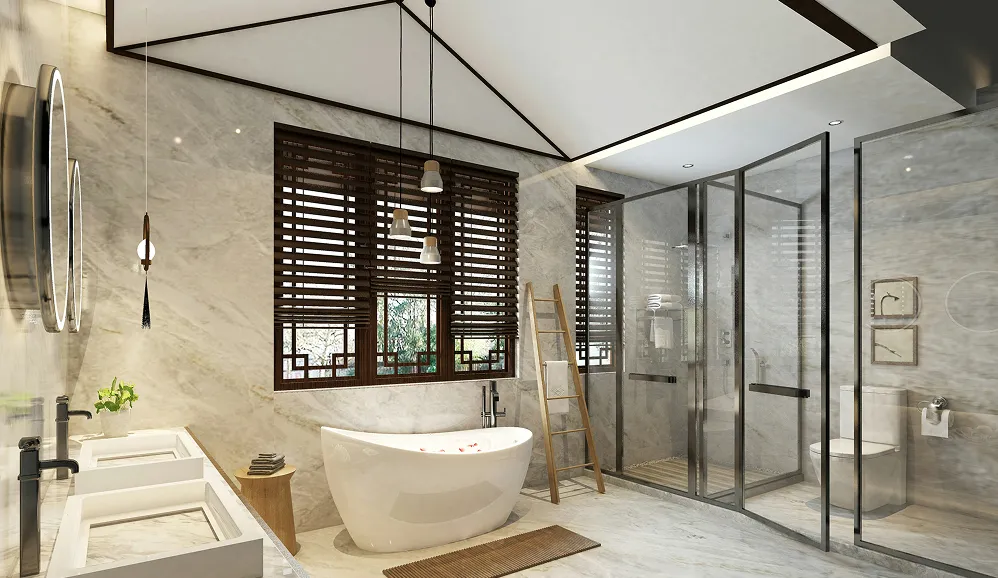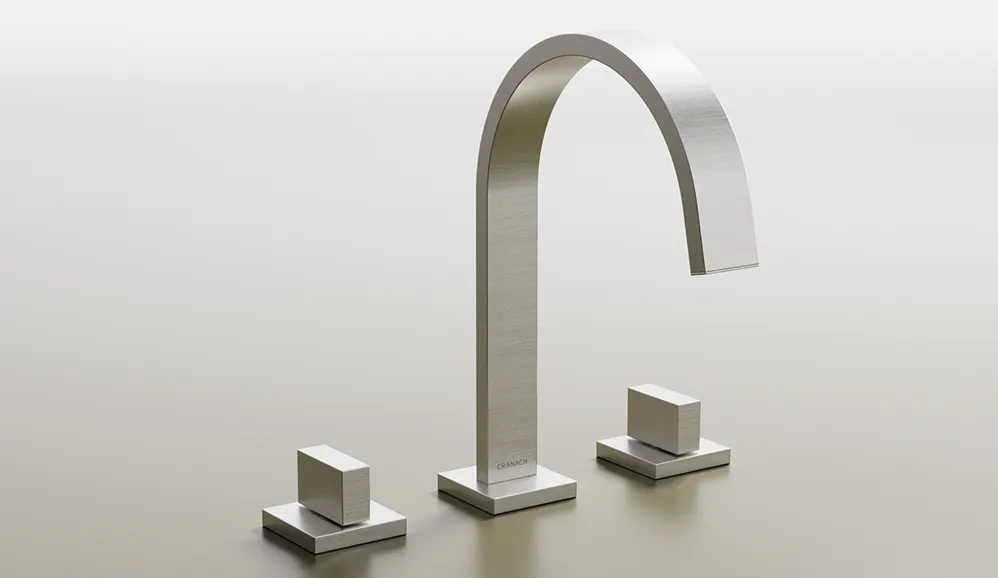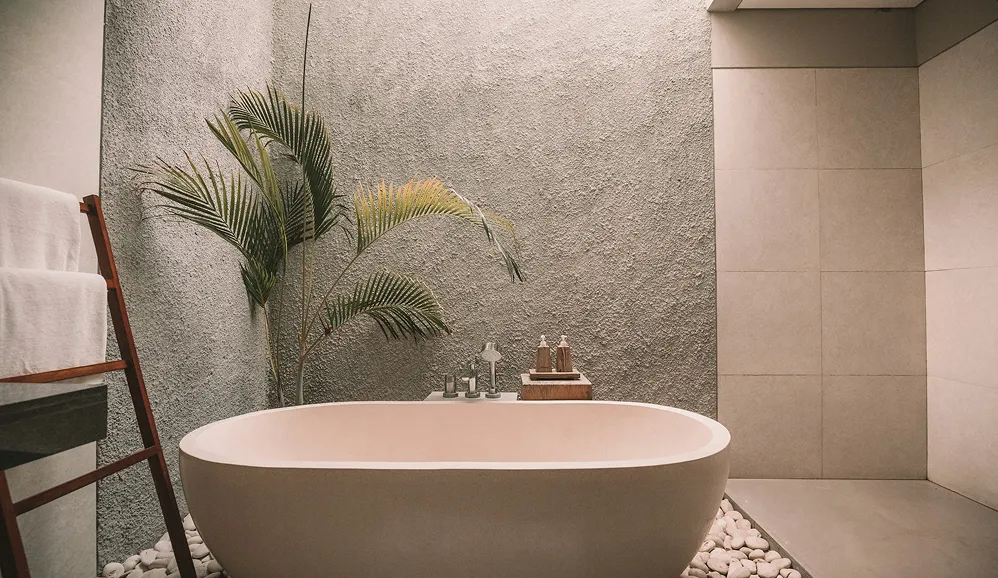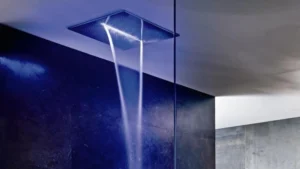There’s nothing more frustrating than stepping into the shower, ready to start your day, only to be met with a pathetic trickle. It’s more than just an annoyance; it’s a terrible way to wake up. The good news is you can often increase water pressure in your shower yourself, and it starts with a little bit of detective work.
Before you even think about buying a new shower head or calling a plumber, you need to figure out where the problem is coming from. Pinpointing the source is everything.
Diagnosing Your Weak Shower Problem
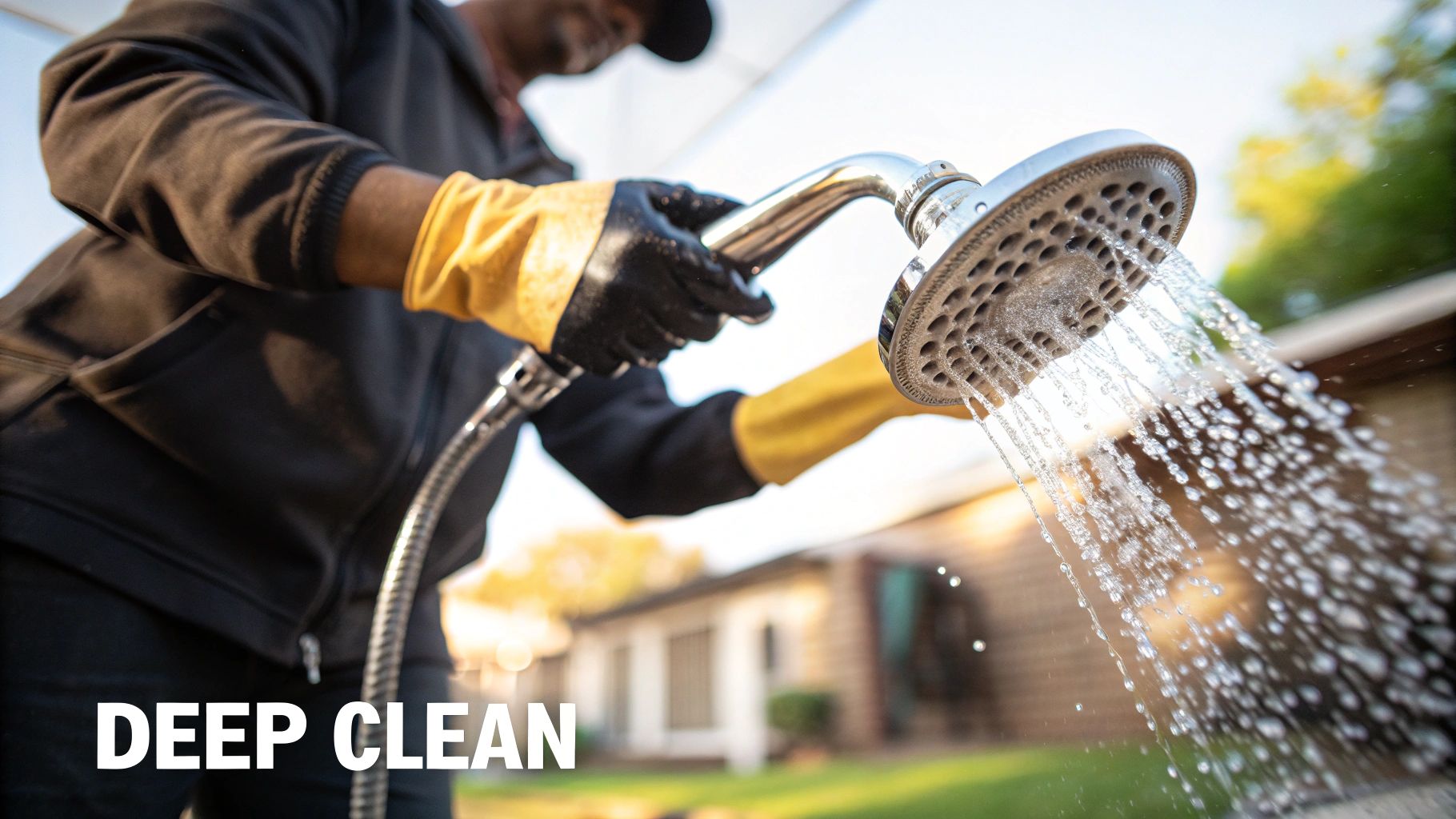
So, where do you begin? The first step is surprisingly simple, and it tells you almost everything you need to know. Walk around your house and check the other faucets. Turn on the kitchen sink, then the bathroom sink. How’s the flow?
This one test is your most important clue.
- Weak flow everywhere: If all your faucets are sputtering, the problem is bigger than just your shower. It’s a system-wide issue. This could point to a problem with your main water valve, a faulty pressure regulator, or maybe even an issue with the city’s supply line.
- Weak flow only in the shower: If every other faucet is running strong, you can breathe a sigh of relief. This means the problem is isolated right there in your bathroom, making it a much easier and cheaper fix. The culprit is almost always a clog in the shower head or a specific valve issue.
To make this even easier, here’s a quick checklist to run through. Think of it as a troubleshooting guide to help you narrow down the possibilities before you grab any tools.
Quick Diagnosis Checklist for Low Shower Pressure
Use this checklist to quickly identify the potential cause of your low shower pressure before attempting any fixes.
| Symptom | Potential Cause | First Action to Take |
|---|---|---|
| All faucets in the house have low pressure. | Main shutoff valve partially closed or faulty pressure regulator. | Locate your main water shutoff valve and ensure it is fully open. |
| Only the hot water has low pressure in the shower. | Sediment buildup in the hot water heater or a problem with its valve. | Check the shutoff valve on your water heater. |
| Shower pressure is weak, but other faucets are fine. | Clogged shower head or a faulty shower mixing valve. | Try cleaning the shower head first. It’s the easiest fix. |
| Pressure suddenly dropped after recent plumbing work. | Debris may have been kicked up into the pipes and caused a clog. | Check the shower head and aerators on other faucets for sediment. |
This checklist should give you a solid starting point. By matching your symptoms to a potential cause, you can avoid a lot of guesswork and focus your efforts where they’ll make a real difference.
Pressure vs. Flow: The Common Misunderstanding
People often use “water pressure” and “water flow” to mean the same thing, but they are very different. Getting this right is key to actually solving your weak shower problem.
Water pressure is the force pushing water through your pipes, measured in pounds per square inch (PSI). Water flow is the volume of water that actually comes out of the shower head, measured in gallons per minute (GPM).
You can have great pressure but terrible flow. Imagine a kink in a garden hose. The pressure from the spigot is strong, but the kink restricts how much water can get out. A clogged shower head does the exact same thing.
This is precisely why running out to buy a new “high-pressure” shower head isn’t always the magic bullet. If a clog is strangling the flow before the water even gets to the head, a new fixture won’t do a thing to fix the real issue.
To truly get to the bottom of a weak shower, you need to understand what could be causing the restriction in the first place. For a much deeper look into what’s going on behind your walls, learning about the common low water pressure causes homeowners run into is a great next step. Once you’re armed with that knowledge, you’ll be ready to choose the right fix and finally get back the powerful, refreshing shower you deserve.
The Easiest Fix: Unclogging Your Shower Head
After you’ve done a bit of detective work, you might be relieved to find the fix is simpler and cheaper than you imagined. More often than not, the real culprit behind a weak shower isn’t a massive plumbing disaster. It’s usually just a slow, steady buildup of mineral deposits inside the shower head itself. This is a super common problem, especially if you live in an area with hard water.
Over months and years, minerals like calcium and magnesium—along with tiny bits of sediment—create a stubborn scale. This limescale clogs up the small nozzles on your shower head, basically choking the water flow and turning what should be a powerful spray into a disappointing drizzle. The good news? Cleaning this gunk out is a straightforward fix that can increase water pressure in your shower almost instantly.
Your Go-To Cleaning Method: The Vinegar Soak
One of the best ways to dissolve those mineral deposits is with a simple, overnight vinegar soak. Plain old white vinegar contains acetic acid, which does a fantastic job of breaking down the alkaline mineral compounds without messing up your fixture’s finish.
Here’s how to get it done right:
- Get the Shower Head Off: Most modern shower heads can be unscrewed by hand. If it’s stuck tight, wrap a cloth around the connection nut to protect the finish, then use a wrench to gently loosen it.
- Submerge and Soak: Pop the shower head into a bowl or a sealed plastic bag. Pour in enough white vinegar to completely submerge it. For best results, let it soak for at least a few hours, or even better, overnight for really stubborn clogs.
- Scrub and Rinse: After its bath, grab an old toothbrush or a small, soft brush. Scrub away any gunk still clinging to the nozzles. Once you’re done, give the shower head a good, thorough rinse with warm water.
- Reinstall and Test: Screw the shower head back on, making sure it’s snug but not cranked on too tight. Turn on the shower to flush out any last particles and get ready to enjoy your newly restored water pressure.
Honestly, this simple cleaning routine is often all it takes. Before you start spending money on new parts, always try this deep clean. You might be shocked at how much of a difference it makes.
Don’t Forget the Filter Screen
Tucked inside the neck of your shower head, right where it connects to the pipe, is a small but critical part: the filter screen or washer. This tiny mesh screen is there for a reason—to catch sediment and debris before it can get to the nozzles and clog them. Of course, this means the screen itself can get clogged.
While you have the shower head off, use a pair of needle-nose pliers to gently pull out the filter screen. Don’t be surprised if you find it full of sediment. Just rinse it under a faucet and use a soft brush to clear away any stubborn particles. Pop it back in before you reinstall the shower head.
For a full walkthrough on this task, our complete guide shows you how to clean a shower head from start to finish.
And while cleaning your shower head is a great first step, sometimes the blockage is deeper in the plumbing. For more detailed guidance, you can learn how to unclog a shower drain.
It’s interesting to see this focus on fixture performance at a time when there’s a global push for water efficiency. The market for water-saving shower heads hit about $1.5 billion in 2023, largely because these new models are designed to keep the pressure feeling great while using less water. Since showers can account for roughly 17% of a home’s indoor water use, even small improvements in efficiency can have a huge impact.
Making Simple Adjustments for a Major Boost
Before you even think about pulling out your wallet or replacing parts, let’s talk about a few simple, no-cost tweaks. These adjustments can often give your shower’s performance a surprisingly significant boost. More often than not, homes have hidden valves that aren’t set for optimal flow, and just checking them is the perfect place to start.
Sometimes, these small changes are all it takes to turn a frustrating drizzle into a satisfying downpour. You just need to know where to look.
Find and Check Your Water Valves
Your home’s plumbing system has a couple of key control points that directly affect your shower. The fix can be as simple as turning a handle that was accidentally left partially closed, maybe after some plumbing work you had done a while back.
- Main Water Valve: This is the big one—the master shutoff for your entire house. Find it and make sure the handle is turned completely to the “on” position. If this valve is even slightly closed, it will choke the water pressure everywhere.
- Shower Mixing Valve: Some showers have their own shutoff valves, or a mixing valve with adjustable pressure settings hiding behind the main handle’s decorative plate. A quick search for your shower’s manual or model number online can show you how to get in there and make the adjustment.
Once you’re sure the valves are wide open, the next stop is the shower head itself. There’s a common culprit hiding inside.
It’s a classic story: you move into a new house or a plumber fixes a leak, and suddenly the shower feels weak. Nine times out of ten, the problem is a main valve that was never fully reopened after the job was finished.
The Truth About Flow Restrictors
Nearly every modern shower head has a flow restrictor. It’s a tiny plastic or rubber disc put there by the manufacturer to meet federal standards, usually limiting water output to 2.5 gallons per minute (GPM). While that’s great for water conservation, it’s often the main reason your shower feels so underwhelming.
Taking it out is a quick fix that can dramatically increase the water pressure in your shower.
To get it out, just unscrew the shower head from the arm. Peer inside the connection point and you’ll likely see a small, often colorful plastic disc, sometimes with a little O-ring. You can usually pry it out gently with a small screwdriver or even an unbent paperclip. Screw the shower head back on, turn on the water, and prepare for a much more powerful spray.
These simple adjustments are excellent first moves. For a deeper dive into more advanced solutions, feel free to explore our full guide on how to increase shower water pressure. By trying these zero-cost options first, you can often solve the problem without spending a single dime.
Choosing a Shower Head That Maximizes Pressure
So, you’ve cleaned out the clogs and tweaked the valves, but your shower still feels more like a light drizzle than a powerful spray. If that’s the case, it’s probably time for a strategic upgrade.
But hold on. Just grabbing any new shower head off the shelf isn’t a guaranteed fix. You need one that’s engineered to perform well, even if your home’s baseline water pressure is just so-so. This is where smart design makes all the difference.
The secret isn’t always about forcing more water through the pipes. Instead, many of the best high-pressure models are designed to accelerate the water they receive, creating a much stronger sensation of pressure. They pull this off with specialized features, like pressure-compensating aerators or meticulously engineered nozzle patterns that channel water into focused, intense streams.
This kind of smart engineering is exactly why the shower fixtures market is booming. Valued at roughly USD 13.3 billion in 2024, the global industry is set to soar past USD 20.4 billion by 2030. Homeowners are clearly willing to invest in a better, more satisfying shower.
Matching the Head to Your Home
Before you click “buy,” it’s absolutely crucial to think about your home’s specific plumbing situation. A shower head that’s a rockstar in one house might be a total dud in another.
If you already know your home has low water pressure across the board, you’ll want to look for models specifically marketed as “low-pressure” or “high-efficiency” shower heads. These are built from the ground up to make the most of every drop of water they get. For a more detailed guide, check out our post on what to look for in a low flow shower head.
On the other hand, if your pressure is already decent, you have a lot more freedom. Your main goal is to find a head that simply shapes the water flow into a pattern you find more satisfying.
A classic mistake is pairing a massive rain shower head with a low-pressure system. They look incredibly luxurious, but that huge surface area demands a serious amount of water flow. Without it, you’re left with a weak, disappointing trickle instead of a drenching downpour.
Comparing Popular Shower Head Types
Not all shower heads are built the same, especially when it comes to pressure. The design itself is a huge factor in how that spray feels against your skin. Here’s a quick rundown of the most common types and how they usually stack up.
- Fixed Shower Heads: These traditional, wall-mounted workhorses are often your best bet for maximizing pressure. Their direct, straightforward path from the pipe means less energy is lost along the way. For the most powerful feel, look for models with a smaller face and a more concentrated nozzle pattern.
- Handheld Shower Heads: While you can’t beat their versatility, handheld units can sometimes have a slight pressure drop because of the long, flexible hose. That said, many modern designs have compensated for this and deliver a powerful spray that easily rivals their fixed counterparts.
- Rain Shower Heads: These large, overhead fixtures are all about coverage, not intensity. They’re designed to mimic a gentle rainfall, which means they naturally provide a lower-pressure experience. These are best reserved for homes that already have great water pressure to begin with.
Ultimately, picking the right shower head is an investment that can completely increase water pressure in your shower. It’s one of the simplest ways to turn a mundane daily task into a small, everyday luxury.
When to Install a Water Pressure Booster Pump
So you’ve tried everything. You’ve deep-cleaned the shower head, you’ve checked that every valve is cranked wide open, and you even splurged on a brand-new fixture. And yet, your shower is still just… sad. If this weak pressure isn’t just a shower problem but a whole-house frustration, it’s time to think about a more powerful fix.
We’re not talking about a minor tweak anymore; this is a serious upgrade. A water pressure booster pump is a device that gets installed right onto your main water supply line. Its entire job is to grab the incoming water from the city and give it a serious push before sending it on its way through your home.
Identifying a System-Wide Pressure Problem
How do you know for sure that a booster pump is the right move? The signs are usually obvious and consistently annoying. A pump becomes a truly worthwhile investment when you start noticing these issues all over the house:
- The flow from every single faucet—kitchen, bathrooms, you name it—is disappointingly weak.
- Your washing machine seems to take forever to fill up.
- Someone flushes a toilet, and suddenly the kitchen sink slows to a trickle.
- Your home is located at the end of a municipal water line, on a hill, or on a high floor of an apartment building where pressure naturally drops off.
If this sounds like your daily reality, you’re almost certainly dealing with low baseline pressure. That means no amount of cleaning or replacing individual fixtures will ever solve the root cause.
Think of a booster pump as the final, definitive solution for homes with chronically low water pressure. It attacks the problem at its source, ensuring every faucet and appliance—especially your shower—gets the strong, steady flow it was designed for.
Understanding Key Pump Specifications
Choosing a booster pump isn’t a one-size-fits-all deal. Two critical factors will determine how well a pump performs for your home: its flow rate, measured in gallons per minute (GPM), and its pressure lift, measured in pounds per square inch (PSI). The goal is to find a pump that can meet your family’s needs without overwhelming your pipes and causing leaks.
To give you some perspective, older shower heads often pushed out around 12 liters per minute (l/min) at a pressure of 3 bar. Many modern, efficient designs now use as little as 7.4 l/min at the same pressure. Knowing these numbers helps, because the pump needs to supply enough pressure to drive the right amount of flow to all your fixtures at once.
Let’s be clear: installing a booster pump is an advanced project. It involves cutting into your home’s main water line and dealing with electrical wiring. This is definitely a job best left to a licensed plumber who can guarantee a safe, code-compliant installation. While it’s a significant investment, it’s often the only way to truly increase water pressure in your shower and everywhere else. And if you’re already planning major plumbing work, you might find our guide on how to replace a shower faucet useful, too.
Answering Your Shower Pressure Questions
Even after you’ve tinkered with all the usual fixes, a few questions might still be nagging you. That’s perfectly normal. Any time you dive into a home improvement project, specific little scenarios pop up. Let’s clear the air on some of the most common things homeowners ask when they’re trying to get their water pressure back on track.
Getting these answers straight will help you troubleshoot with a lot more confidence and make the right call for your home.
Will Removing the Flow Restrictor Raise My Water Bill?
Yes, it absolutely will. That little plastic disc is in there for a reason—it’s designed to save water by capping the flow rate, usually to about 2.5 gallons per minute to meet federal standards.
When you take it out, you’re definitely going to feel a more powerful spray. But that extra power comes at a cost. You’ll be using more water, which means a higher utility bill. You’ll also be using more energy to heat all that extra water. It’s a direct trade-off: a stronger shower for higher monthly expenses.
A great way around this is to install a modern, high-efficiency shower head. They’re engineered with clever nozzle technology to give you that strong, forceful feeling while still being smart about water use. It’s the best of both worlds.
How Do I Know If the Problem Is My Shower or the Whole House?
This is a crucial diagnostic step, and thankfully, it’s a really easy one to figure out. All you have to do is turn on other faucets around your house, like your kitchen sink and the sink in your bathroom.
- If every single faucet has weak flow, the problem is system-wide. This usually points to something bigger, like an issue with your main water valve, a bad pressure regulator, or even a problem with the city’s supply line.
- If it’s only the shower that’s trickling while everything else runs strong, then the issue is isolated right there. The fix is probably a clogged shower head, a dirty filter screen, or a shower valve that isn’t working right.
Can an Old or Kinked Shower Hose Hurt Water Pressure?
Without a doubt. This is an incredibly common—and often overlooked—culprit, especially if you have a handheld shower wand. That flexible hose can easily get kinked, twisted, or folded over, creating an instant bottleneck for the water.
Over time, the inside of the hose can also start to break down or get clogged with its own mineral buildup, restricting the flow even more. A quick look for any obvious kinks is a good place to start, but if the hose is old, just replacing it is a cheap and simple fix that can immediately bring your pressure back. This is one of the easiest ways to increase water pressure in your shower.
For more answers to common plumbing questions, you can always check our detailed frequently asked questions page.
Ready to find the perfect fixture to elevate your daily routine? Cranach offers a premium selection of shower systems and faucets designed for superior performance and a clean, healthy shower experience. Explore our collection today at https://cranachhome.com.

